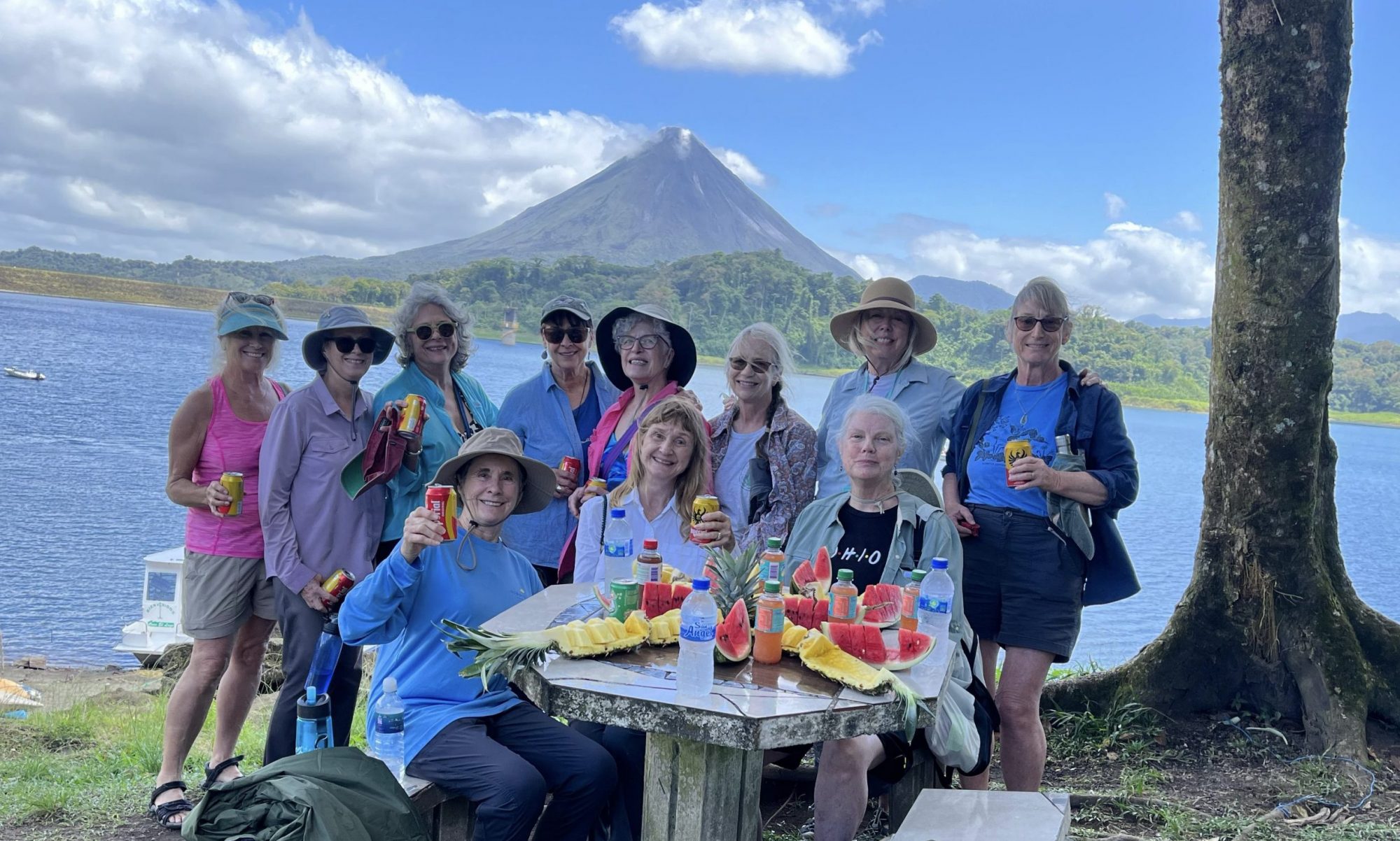Autumn in the Deciduous forest is a time of plenty, transition, beauty and expectations for what’s to come next spring. In the diverse hardwood forests of southeastern Ohio you never know if you need to bundle up or strip down, aside from our current climate controversy, its always been that way! Skies can be shockingly blue, the angle of the sun steep, shadows are long and more often than not its many shades of grey, brown with hits of green and maroon.
If you are lucky and walking in low moist habitats the brilliant yellow flowers (bracts actually) of American witch hazel Hamamelis virginiana might unexpectedly take your breath away. What a autumn show and what a useful plant. You can tincture the new twigs, or better yet make a hydrosol from them for a fresh, skin soothing, astringent topical. It’s cooling, relieves itchy skin, heals bites, rashes and tightens skin as an after shower splash. I always add 1/2 to my Queen of Hungry Water (a favorite skin formula of Rosemary Galdstar), it cuts the vinegar base a bit and is sooo soothing.
 Snapping hazel is a common name of the mesic shrub. The little wooden capsules snap open to throw their seeds out and away from the mother plant as its’ seed dispersal mechanism. Such an interesting and useful autumn treasure.
Snapping hazel is a common name of the mesic shrub. The little wooden capsules snap open to throw their seeds out and away from the mother plant as its’ seed dispersal mechanism. Such an interesting and useful autumn treasure.
So yes, its time to take time and head outside to see what you might find. I love the late summer and fall mushrooms. What a year this was for hen and chicken-of -woods. It was everywhere. It made up for the few summer chanterelles and giant puff balls, though Nature graced us with a few of each.
Maitake Grifola frondosa is a mushroom that traditionally has been used in Japan and China as part of the diet and to treat diabetes and hypertension. Like other medicinal mushrooms, the fruiting body contains a complex sugar (polysaccharides) called beta-glucans. It is reported to stimulate and modulate the immune system and helps fight tumors, and lower blood sugar and lipid levels. Multiple clinical trials have been conducted on Maitake extracts for support of immune function, healthy blood sugar metabolism, a healthy inflammatory response and antioxidant properties.* Several species, long used in traditional herbalism, have been the subject of modern research for their ability to support the immune system.
Japan and China as part of the diet and to treat diabetes and hypertension. Like other medicinal mushrooms, the fruiting body contains a complex sugar (polysaccharides) called beta-glucans. It is reported to stimulate and modulate the immune system and helps fight tumors, and lower blood sugar and lipid levels. Multiple clinical trials have been conducted on Maitake extracts for support of immune function, healthy blood sugar metabolism, a healthy inflammatory response and antioxidant properties.* Several species, long used in traditional herbalism, have been the subject of modern research for their ability to support the immune system.

One of my favorite herbal mentors, Dr. Christopher Hobbs tells the story of how miatake or hen-of-the-woods got its name ‘Dancing Butterflies’, because people in Japan danced with joy, when they found them! Chris is an amazing teacher of so many things herbal and mushroom and a great author of many easy to read and use books.
Paul Stamets, another well known mushroom grower, researcher and educator. Paul is another incredible speaker and author, he is a reliable source on the research into medicinal mushroom, particularly Turkey Tail, Trametes versicolor. Yes this is yet another another easy to find, easy to ID, prepare and enjoy. According to Stamets, the turkey tail mushroom suppresses inflammatory response, enhances the microbiome, and may be a powerful adjunct cancer therapy. “We think it decloaks cancers for discovery by the immune system”, he stated in one article. This lovely little mushroom is quite common shelf fungus growing on trees and can be identified by its fuzzy bands of colors such as orange, blue, white, and tan and white small pores on the bottom side.
So there you are, just a few of the many tasty and medicinal treasures for your to explore. And as an ethical wildcrafter, I know you will always be mindful of the harvesting standards of Nature’s bounty; make a positive ID, never take everything or the biggest, take what you need and know you can process or share and be grateful for the richness and beauty around you. Until the next foray, Namaste, Rebecca…
References:
https://www.gaiaherbs.com/blogs/herbs/maitake
https://www.webmd.com/vitamins/ai/ingredientmono-560/maitake-mushroom

















 As I ponder all that’s going on right now, I recall a saying by Heraclitus of Ephesus “the only thing that is constant is change” and present circumstances is an example of how true that is. Yes, change is certainly all around us, the impetus for many reactions and emotions. We all seem to be up, down, challenged, scared, angry and well just over loaded.
As I ponder all that’s going on right now, I recall a saying by Heraclitus of Ephesus “the only thing that is constant is change” and present circumstances is an example of how true that is. Yes, change is certainly all around us, the impetus for many reactions and emotions. We all seem to be up, down, challenged, scared, angry and well just over loaded. reflect and to come back into balance. Just letting my eyes soften as I walk down a trail, gaze at a forest pond, lake, stream or beach eases my soul. I take in the colors, shades, scents and sounds around me allowing me to find my Ahhh and my Ahhh ha. It reminds me, I am resilient, I am able, I do cope and I do have things to offer in my community and in keeping my own countenance. So Hum-I am.
reflect and to come back into balance. Just letting my eyes soften as I walk down a trail, gaze at a forest pond, lake, stream or beach eases my soul. I take in the colors, shades, scents and sounds around me allowing me to find my Ahhh and my Ahhh ha. It reminds me, I am resilient, I am able, I do cope and I do have things to offer in my community and in keeping my own countenance. So Hum-I am. In contemplating wellness, I guess Nature, yoga, walking and paddling are my go to meditation. I find myself relieved and focused once I roll out the mat or push off from the kitchen counter for an impromptu balance and
In contemplating wellness, I guess Nature, yoga, walking and paddling are my go to meditation. I find myself relieved and focused once I roll out the mat or push off from the kitchen counter for an impromptu balance and 





 It was a day to learn how to… Yes, How to make our own… food from the wild and as importantly, why… we ate, oh we ate…and we hiked, botanized, took time to sit in the sanctuary only Nature can offer and ponder. We learned to Id and plant ramps and felt community with new and old friends and nature.
It was a day to learn how to… Yes, How to make our own… food from the wild and as importantly, why… we ate, oh we ate…and we hiked, botanized, took time to sit in the sanctuary only Nature can offer and ponder. We learned to Id and plant ramps and felt community with new and old friends and nature.

 CEU’s or CMU’s in Allied Health, Yoga and Massage, just ask. So join us and experience Yoga in new ways, open and balance your Chakras, discover your Dosha and renew your spirit!
CEU’s or CMU’s in Allied Health, Yoga and Massage, just ask. So join us and experience Yoga in new ways, open and balance your Chakras, discover your Dosha and renew your spirit! Some folks are already signed up but to ensure early bird saving to all, I do need to alert folks to one new change, I am shifting to a new marketing company, BookYogaRetreats.com and they take a percentage. So early bird prices will end earlier than stated on the first flyer. I will be redoing it and reposting it but for your convenience
Some folks are already signed up but to ensure early bird saving to all, I do need to alert folks to one new change, I am shifting to a new marketing company, BookYogaRetreats.com and they take a percentage. So early bird prices will end earlier than stated on the first flyer. I will be redoing it and reposting it but for your convenience  out the alert now. Stated EB prices will end November 15th. and the regular price of $1,750.00 will stand regardless if you book through me or BookYogaRetreats.com after November 15, 2017. It’s their policy that I only have one price advertised.
out the alert now. Stated EB prices will end November 15th. and the regular price of $1,750.00 will stand regardless if you book through me or BookYogaRetreats.com after November 15, 2017. It’s their policy that I only have one price advertised. $1,750.00 is still an outstanding price for the event as it includes sweet accommodations, amazing cultural cuisine, all in-country travel, guides, entrance fees, all your yoga, art and materials and a chance to be in one of the healthiest, happiest most beautiful places in Costa Rica. Experience the Playa and beauty of The Ballena National Park and the jungles and cloud forests from N to S in this amazingly diverse gem of a country.
$1,750.00 is still an outstanding price for the event as it includes sweet accommodations, amazing cultural cuisine, all in-country travel, guides, entrance fees, all your yoga, art and materials and a chance to be in one of the healthiest, happiest most beautiful places in Costa Rica. Experience the Playa and beauty of The Ballena National Park and the jungles and cloud forests from N to S in this amazingly diverse gem of a country. Rebecca with any questions you might have. 740-590-3954 or becaherbtravel@gmail.com.
Rebecca with any questions you might have. 740-590-3954 or becaherbtravel@gmail.com. 


 arrive in county at the San Jose International Airport, all for the Amazing Price of $1,475.00-1,575.00 based on double or triple occupancy. A $300.00 non-refundable deposit due by Nov. 1st . Pay in full upon registration, save $100!, you can’t beat that. A sir charge of $100.00 applies after Nov. 1st . Round trip air, tips and gratuities not included and we request you have your own international travel & health coverage.
arrive in county at the San Jose International Airport, all for the Amazing Price of $1,475.00-1,575.00 based on double or triple occupancy. A $300.00 non-refundable deposit due by Nov. 1st . Pay in full upon registration, save $100!, you can’t beat that. A sir charge of $100.00 applies after Nov. 1st . Round trip air, tips and gratuities not included and we request you have your own international travel & health coverage. 




